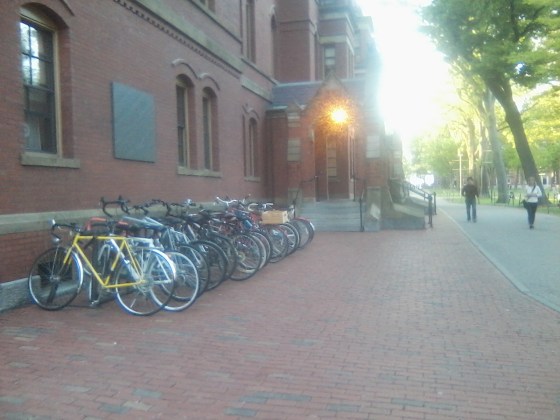
Cycling advocates often use the argument that all cyclists are safer when more cyclists are on the roads. The theory behind this is that drivers will be more aware of bicycles if they are not a rarity.
All sorts of statistics are provided to show fewer accidents and injuries to cyclists as the number of active cyclists rises. However, these numbers are generally relative. In other words, they show a decrease in accidents when you look at percentages, not just the raw number of accidents.
There is probably some truth in this argument. A lot of bicycles means that drivers encounter them more frequently, and often more than one bike at time.
This should make cyclists safer in terms of preventing accidents due to drivers being surprised by encounters with bicycles. But, does this reduction in accidents hold true in other situations?
For instance, many cyclists become involved in accidents when a car right hooks them by accelerating to pass them and then turning right directly in front of them. Adding more cyclists to the roads will probably not prevent this type of accident. It’s caused by impatience or poor judgment.
Drivers often underestimate a bicycle’s speed. They think that they can pass a bicycle and turn right before the bicycle makes it to the road where they are turning. This is a relative judgment because drivers estimate the bicycle’s speed based on their beliefs about how fast a bicycle can travel relative to a car.
Often, drivers see a car as ten times faster than a bicycle. Such a judgment makes the bicycle’s movement seem slow, and gives a driver an inaccurate sense of how fast a car can reach a particular point before a bicycle would. Reducing the number of right hook accidents will require more than a larger number of cyclists. A lot of driver education about how fast bicycles travel and why it is dangerous to turn into the path of a bicycle will be necessary.
Many other car versus bicycle accidents are caused by driver error. In some cases, drivers fail to yield the right of way to bicycles. This is often the case when a bicycle begins to cross an intersection and an oncoming car wants to turn left.
The driver sometimes thinks that, as the faster moving vehicle, he has the right of way and can turn in front of the bicycle. This is another case where a driver misjudges a bicycle’s speed and thinks that a turn can be completed before a bicycle makes it to the spot where the car is turning.
Adding more bicycles to the roads will not reduce this type of accident because, again, it is an error of judgment. It requires education about how bicycles function and a refresher on the rules of the road.
Then there is the age old problem of familiarity breeding contempt. Right now, bicycles are a small minority on most U.S. roads. Under normal circumstances, drivers don’t have to make much of an effort to steer around them because they are few and far between.
Yet when more bicycles are added to the roads, drivers will be forced to show more patience and will have to watch out for many more bicycles. Doing so will slow down traffic. And, contempt for bicycles may build at that point.
Drivers will have no choice but to accept a slower pace of travel. It’s hard to say whether this will make cyclists more or less safe.
As it is, some drivers verbally and physically harass cyclists, occasionally going so far as to assault them or run them off the road. Increasing the number of cyclists such drivers have to contend with may make them more aggressive towards cyclists. And even less aggressive anti-cyclist drivers may generalize their frustration by increased stereotyping and opposition to providing bicycle accommodations.
Overall, increasing the number of bicycles on the roads may serve to decrease certain types of accidents. Certainly, it will avoid accidents resulting from encountering unexpected bicycles on the road. Drivers will also gain more experience in sharing the road with bicycles, which may cut down on judgment errors over time, especially if driver education is added to the equation.
Still, we shouldn’t overlook the negatives of increased ridership with respect to driver attitudes. Having to slow down, when cars are prized for their speed, will probably not sit well with many drivers. Resentment may build and cyclists should be prepared for this.
Assuming that there is safety in numbers can be a false assumption. It gives one a false sense of security. And, it is a bit shortsighted because it only deals with the here and now by comparing the present to the near term. If cycling is going to become mainstream, we must project our ideas farther into the future and envision a time when bicycles are commonplace on the roads.
At such a time, safety will have to come from some other place besides numbers. Many possibilities for what will make a cyclist safe exist. Cyclists should think about those possibilities sooner rather than later, and come up with a plan, if they really want cycling safety to be a priority.



5 Responses to Cycling Safety In Numbers Or Not